They’re not the most colorful animals in your tank, but experienced aquarists know the true value of the silver-grey colored striped fish known as the Siamese Algae Eater. These aquatic eating-machines are some of the best algae eaters in the trade, so check out our complete guide and see why they’re ideal for densely planted tanks!
Introduction to the Siamese Algae Eater (SAE)
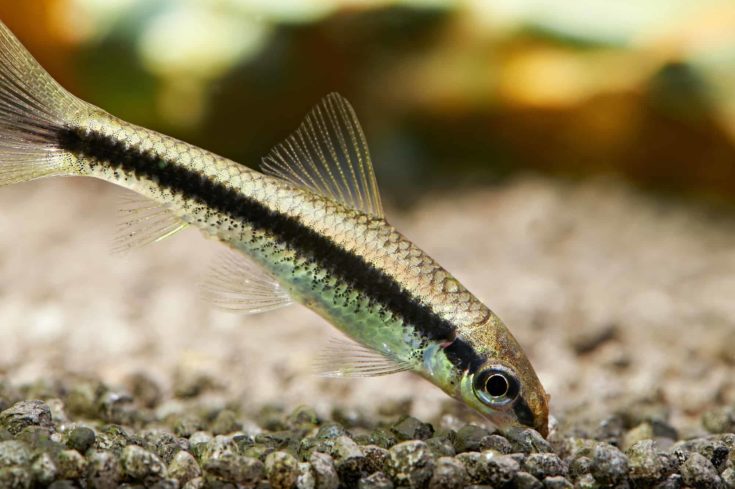
You don’t have to wait for an outbreak before adding an algae eater to your community aquarium, and one of the best options for peaceful planted tanks are the active and irrepressible Siamese Algae Eater or SAE (genus Crossocheilus). They’re very easy to care for, and their shark-like appearance adds a fun touch to your tank.
Natural History and Habitat
“Siamese Algae Eater” is the generic name for a group of closely-related bottom-feeding fish native to Southeast Asia. Wild populations are found in rivers and streams in Thailand, Laos and Cambodia, but may also live in flooded areas during the rainy season. Unique populations exist throughout the region.
SAEs are members of the Cyprinidae family and, like other minnows and carp, are scavengers who feed mostly on plants and algae in the wild. As omnivores, they readily consume insects, larvae, and eggs, and they enjoy snacking on fish fry or any dead animals they come across.
Pet store fish are usually captured from native populations as juveniles before they’re sold into the aquarium trade. There’s not a lot of information about the behavior and habits of wild fish, which leads to the next challenge: identifying which species you’re actually buying under the name SAE.
Types of Siamese Algae Eaters in the Aquatic Trade
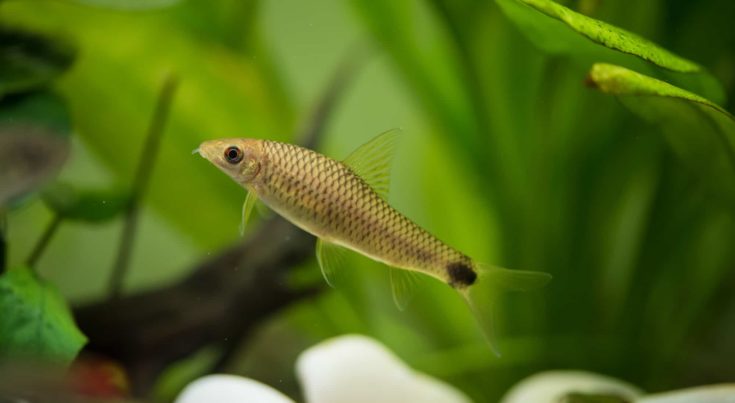
There’s two problems you’ll face when searching for a group of SAEs for your tank. First, there are several species often sold as SAEs (or under generic common names like Asian or Siamese Flying Fox) that look similar as juveniles, but are unrelated and have different care and dietary requirements:
- The Chinese algae eater or CAE (Gyrinocheilus aymonieri) is semi-aggressive and grows much larger than true SAEs.
- The territorial Flying Fox (Epalzeorhynchos kalopterus) look nearly identical but aren’t very interested in eating algae. Unlike true SAEs, they have dark-colored pelvic, anal, and dorsal fins.
- The False Siamese Algae Eater (Garra cambodgiensis) is another mimic that is frequently mislabeled in pet stores. You can distinguish them by the faint diagonal stripes on their dorsal fins, which SAEs lack, and their body or lateral stripe, which fades away at the caudal peduncle instead of extending to a fork in their tail.
What Species Is My Algae Eater and Why Are Their Names So Confusing?
The second problem has to do with the way scientific names evolve, and how confusing it can be when similar species share the same habitats. True SAEs are part of the Crossocheilus genus, and there’s at least 17 closely-related and almost identical fish in this genus that exist throughout the region.
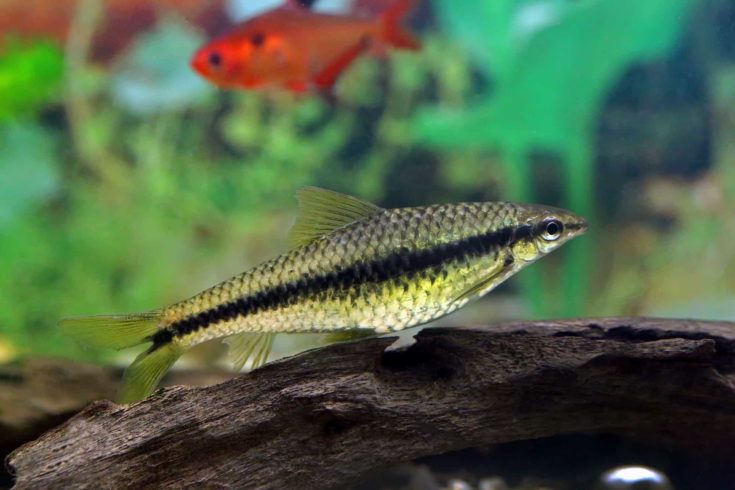
Since they are captured while young (see Breeding) and have overlapping natural ranges, it’s not uncommon to collect juveniles of multiple species at the same time. Pet stores may not even know which species they’ve received in a shipment unless the distributor specifies!
- You might see several species in a generic SAE or C.siamensis tank, especially in big-box pet stores, although aquatic specialty shops should be better informed.
- Stores commonly identify SAEs as Crossocheilus siamensis, but that particular species (which totally lacks barbels and has a fringed, V-shaped upper lip) is very rare and almost never seen in the US aquatic trade.
- Recently, some have started using C.oblongus as the scientific name for SAE, but that term is properly used only for a distinct population of fish with blue and yellow colors native to the islands of Java that have never been imported to the US.
- Fish-store tanks labeled as C.siamensis (or less commonly, C.oblongus) are far more likely to be one of the unrelated mimics mentioned above or a more common (or undescribed) species of Crossocheilus such as the C.langei or C.atrilimes.
- There’s also a rarer variety known as the Reticulated Siamese Algae Eater (Crossocheilus reticulatus) which has a regular speckled pattern to their scales and lacks the lateral stripe.
Does it Matter Which Species You Get?
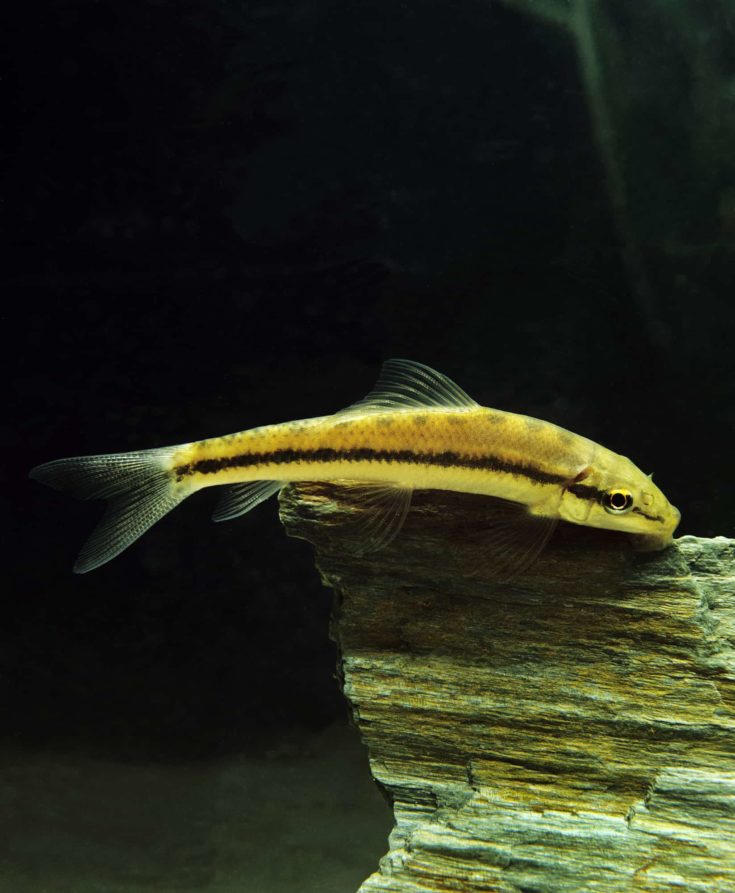
It depends. Not all SAE-like fish are friendly or prefer to eat problematic algae. If you get the wrong type of fish, they may outgrow your tank, bully your other fish and eat your aquatic plants, and they probably won’t do much to control your algae growth, either.
- CAEs may attack other fish, Flying Foxes are territorial and False SAEs don’t enjoy eating algae.
- C.atrilimes are SAEs, but are not effective at algae control and prefer to eat Java Moss and plant leaves.
- C.langei, the Red Siamese Algae Eater, are friendly community fish and excellent consumers of algae. They enjoy munching on tough hair or thread algaes and are one of the few fish who’ll eat the dreaded black beard (or red) algae! They are one of the best types of SAE to get if you can!
Size and Appearance of SAEs
Your Siamese algae eater’s size should be between 5 and 6-inches in length when fully grown. They’re usually sold as juveniles at around 1.5 to 2.5-inches in length. It’s difficult for novices to identify the exact species or gender until they are fully mature at 3 to 4 years of age.
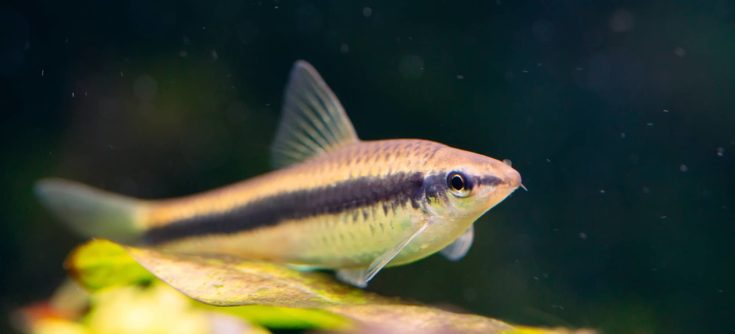
SAEs have long, streamlined brownish to silver-grey bodies with a black lateral line running lengthwise from the opercle near their gill cover through the fork in their caudal fin (tail). Other characteristics include:
- Fins are usually opaque, although some species may have a slight brownish tint along the edges.
- If your fish is more colorful or has dark-colored fins, it’s likely either a mimic-species or a less-common SAE in the Crossocheilus genus, and not the algae-busting C.langei.
- SAEs have a wide sucker-like mouth and unhinged jaw, and some species have one or more delicate barbels on the sides of their snout.
- The rarely-seen C.siamensis lacks barbells but the popular C.langei have two pairs, and in C.atrilimes the maxillary barbels are not visible but are present.
- You can also distinguish C.langei from the less-useful C.atrilimes species by the black blotch around their anal vent, and the wider spacing between their vent and anal fins.
Lifespan
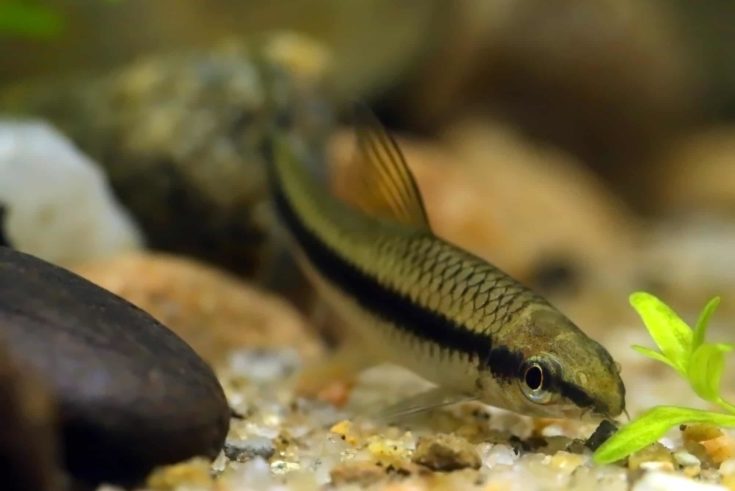
On average, SAEs can live for about 10 years in an aquarium, although it’s unlikely wild fish survive as long. Most fish are probably sold around 1 to 2 years of age.
Behavior and Temperament
SAEs are active fish who are constantly in motion. Young fish often hang out in the middle of the tank, but mature fish spend most of their time at the bottom. Since they don’t have a swim bladder, they can’t maintain buoyancy in the water when they stop moving, which leads to some interesting behaviors:
- Resting fish will prop themselves up on their pectoral fins on the wide leaves of plants like Amazon Swords, or on driftwood or smooth rocks on the bottom of your tank.
- They attach themselves to the aquarium and decor with their sucker mouths while they rasp algae and biofilm away.
- If your fish stop moving, they immediately sink to the bottom of the tank!
They are also social fish who enjoy shoaling in groups, although they do well on their own too. To avoid problems with bullying, it’s best to have at least 5 SAEs in your shoal, since they create a social hierarchy among themselves. So get one fish, or at least 5, and avoid small groups of 2 or 3.
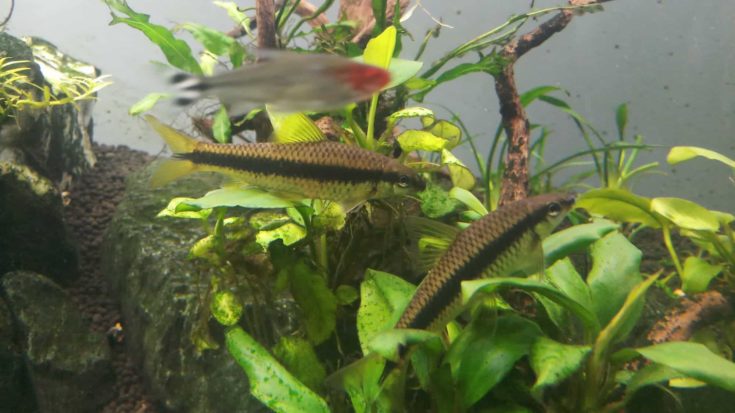
SAEs are a great option for planted community tanks with other active fish, but they may be nippy with slow-swimmers or fish with long fins. Avoid keeping with semi or aggressive fish, or with species that are territorial like cichlids or Red-Tailed Sharks. SAEs may cause other bottom-feeders a lot of stress from their constant activity.
How to Care for Your Siamese Algae Eater
The good news is it’s very easy to care for your SAEs and in most cases, you won’t have to make many modifications to your tank to accommodate them.
Tank Set-up and Habitat Requirements
What’s the best aquarium set-up for SAEs? They’re not very picky, so let’s talk about their basic requirements:
Aquarium Size and Shape
Since SAEs spend most of their time in the lower portions of your tank, they do best in tanks that are long rather than tall. They are very active and may jump out, so a hood or lid is needed to keep them safe. I recommend at least a 20-gallon tank for a single SAE and around 10-gallons per additional fish. A 55-gallon tank is ideal for 5.
Substrate
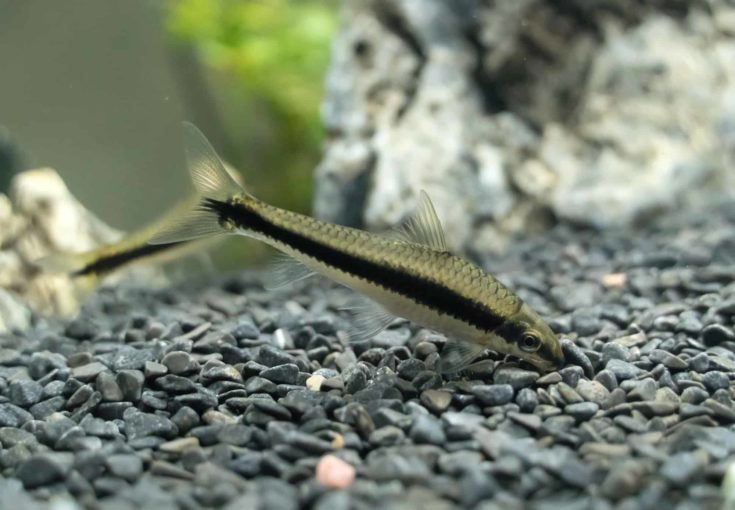
To prevent injury to your SAE, it’s best to use a smooth substrate without any jagged edges that could hurt their abdomen or delicate barbels. Go with soft sand or aquatic soil in your tank, or use a mix of small, round pebbles and larger smooth rocks. Avoid the rough aquarium gravels.
Water and Temperature Parameters
SAEs are not sensitive to water hardness and adjust well over a wide range of parameters as long as they’re consistent. They prefer a water pH between 6.5 and 8, although they can tolerate a pH as low as 6.0. The most limiting factor is their temperature preference. SAEs have a narrow range and prefer their water just under tropical conditions between 75 and 79°F, so you’ll need a heater.
Filtration and Aeration
While SAEs do well in a tank set-up like a riverscape, with strong currents or wavemakers, they don’t require such high flow rates.
- They do best in well-filtered and very clean water with high oxygen levels, and they don’t like stagnant or still conditions.
- They do prefer to swim in currents, though, so a good HOB or canister system is their ideal type of filtration.
Lighting, Plants and Decorations
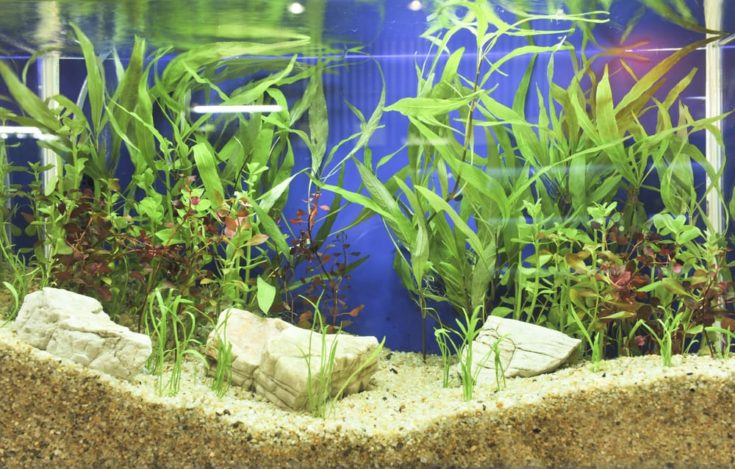
SAEs do well in tanks with low, moderate, or bright lighting conditions, but about 12 hours a day of moderate light is close to their natural conditions. The ideal SAE tank would have densely planted areas with both slow-growing plants like Amazon Swords and fast-growing soft plants like Hornwort (they will snack on the Hornwort).
You’ll also need open areas where your SAE can swim and shoal (if kept in groups), and interesting places to explore and hide. Using rocks and driftwood decor, you can create caves and provide different surfaces and textures for growing algae and biofilm for your fish to consume.
Maintenance
Algae eaters don’t have specific maintenance requirements. It just depends on the needs of your plants and the type of filtration system you’re using. Use high-quality filter media, and perform regular water changes and gravel vacuuming to limit the build-up of toxins in your tank, which can especially affect the bottom-dwelling SAEs.
Feeding
It’s not difficult to feed your SAEs, as these fast-swimming scavengers will help themselves to any leftover scraps. While they’ll likely consume plant leaves, algae and biofilm in your tank too, your closed-system aquarium can’t naturally provide them with a proper and balanced diet, so you’ll have to supplement it.
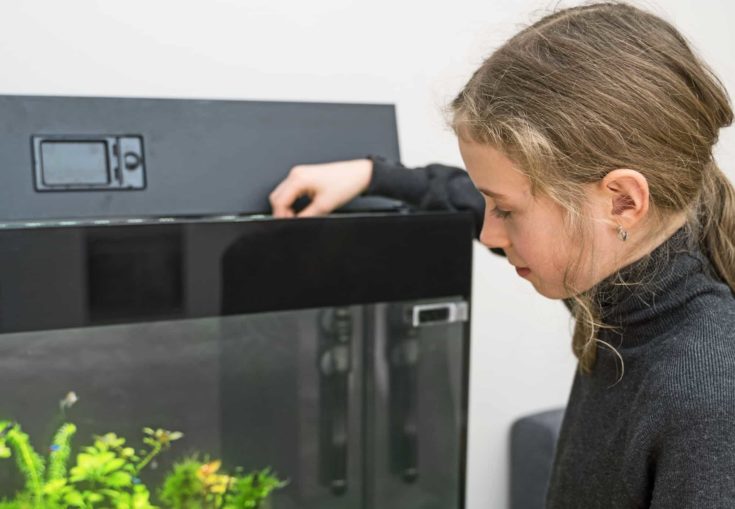
While these fish are omnivores, too much protein in their diet can cause constipation and may lead to other problems. I feed my SAEs one meal a day and fast them one day a week to mimic their natural feeding habits:
- It’s best to feed them a high-quality commercial diet of sinking algae wafers and spirulina pellets; these sinking diets will distract them while your upper-level fish grab the floating foods.
- You can offer treats of fresh blanched veggies like spinach, peas and cucumbers in place of the wafers a couple of times a week, too.
- Once a week, substitute their usual meal with a protein treat like bloodworms, brine shrimp, mosquito larvae or Daphnia eggs.
Tank Mates
Siamese algae eaters are not aggressive and get along with a wide variety of fish. The best tank mates for these algae eaters are other peaceful community species that use areas that SAEs avoid, although they also get along well with non-territorial bottom feeders like Corydoras and loaches.
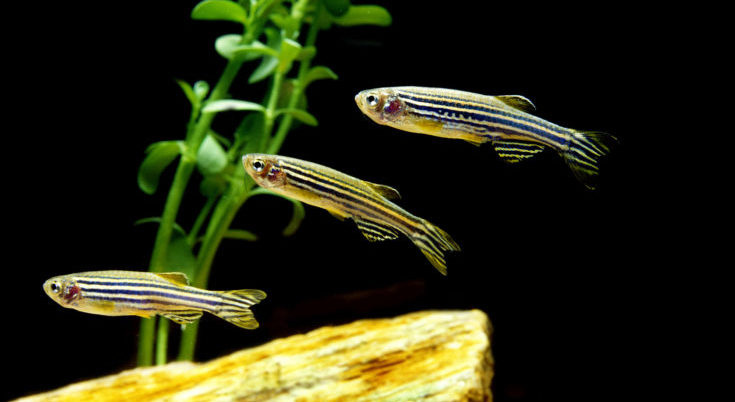
Schooling swimmers with short fins are ideal SAE companions, so consider fish like tetras, minnows, danios, guppies, platys and mollies, gourami, and friendly barbs like the Gold, Cherry and Rosaline Torpedo. They also do well with invertebrates like snails and small freshwater shrimp.
Avoid keeping your SAEs with semi-aggressive fish like Tiger Barbs or territorial sharks and cichlids. Since they may nip at slow-swimmers with long tails, it’s also best to avoid keeping angelfish or discus with SAE, although I have successfully kept them with a male Betta fish in a big community aquarium.
Breeding
As far as I know, no one in the US has ever been successful at breeding SAEs naturally in an aquarium or pond. Most fish are captured in the wild as juveniles and transported to pet stores around the world. We know very little about their breeding requirements and spawning behaviors, other than they are egg-layers.
There’s reports that some fish are captive-bred in Asia using artificial hormones to induce spawning, but no details on this method have been published. Since these hormones aren’t something a home aquarist has access to, don’t expect your SAEs to spawn in your tank.
Health Concerns of SAEs
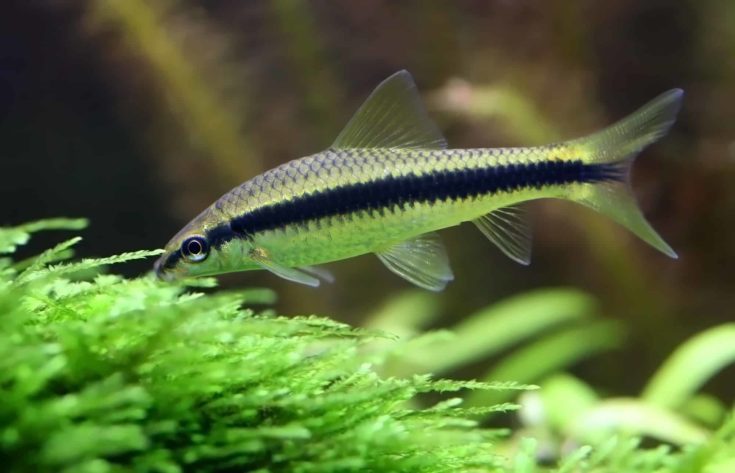
Siamese algae eaters are usually healthy fish, and they don’t have many specific diseases or health problems they’re prone to. Like all aquarium species, they are sensitive to their water parameters and prefer very clean water, and high ammonia or nitrate levels cause a lot of stress and can lead to illness.
A common problem with SAE is constipation and obesity from being fed a rich diet high in protein, so be sure to feed your fish plenty of plant-based foods and fresh veggies. Keep an eye out for signs of bacterial, viral or fungal infections, and be sure to quarantine new plants and animals before adding them to your community.
Setting Up Your SAE Tank: Equipment and Supply List
What do you need to design a great planted aquarium ideal for a Siamese algae eater and other friendly community fish? For a single SAE and a small planted community, you’ll need:
- 20 to 30-gallon aquarium (or larger), preferably a long-style tank with a close-fitting hood or cover
- Light fixture
- Heater
- HOB or canister filtration system
- Sand, aquatic soil or smooth pebble-based substrate
- Variety of live plants, including a mix of fast and slow-growing species
- Decor like rocks, driftwood, sticks and branches
- A bottle of water conditioner
To feed your SAE, you’ll need:
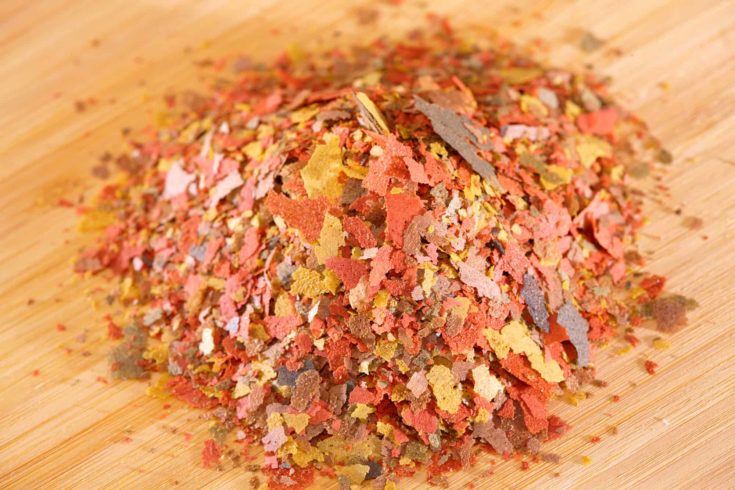
- Commercial sinking algae wafers or spirulina pellets
- Fresh veggies
- Occasional treat foods such as bloodworms, mosquito larvae or brine shrimp
Optional equipment you may find helpful includes:
- An air pump and air stone
- CO2 diffuser and/or fertilizer for your aquatic plants
- UV sanitizer
Quick Facts About Siamese Algae Eaters
Scientific Names
Multiple Crossocheilus species, including C.siamensis (True SAE), C.langei (Red SAE), C.reticulatus (Reticulated SAE) and C.atrilimes
Common Names
True Siamese Algae Eater, SAE, Flying Fox Siamese Algae Eater
Family
Cyprinidae
Origin
Southeast Asia
Care Level
Easy
Size Range
5 to 6 inches in length
Diet and Feeding
Omnivore; prefers live foods but will readily eat commercial diets, plants and algae. Specifically consumes hair/thread and black beard (red) algae. Best to feed a diet of sinking algae wafers and other plant foods with a high-protein treat each week
Activity
Active and Curious
Temperament
Peaceful and Social
Tank Level
Bottom Dweller
Minimum Tank Size
20 gallons; allow an additional 10-gallons per fish
Best kept solo or in groups of 5 or more
Temperature Range
75 to 79°F
Water Hardness
Not sensitive; 5 to 20 KH
pH Range
6.5 to 8
Filtration/Flow Rate
Prefers clean, well-oxygenated water and moderate flow rates, but tolerates both light and heavy currents
Breeding
Egglayer, but other habits unknown
Compatibility
Ideal for peaceful community aquariums, but may nip at fish with long fins or slow swimming habits. Their constant activity may disturb territorial bottom feeders, and they shouldn’t be kept with aggressive or semi-aggressive species like cichlids or freshwater sharks
OK for Planted Tanks?
Ideal for lightly and densely planted aquariums!
Conclusion
As you can see, SAEs are one of the best species for algae control and they’re an ideal option for tanks with a lot of plants. The Red SAE is an especially voracious eater! Do you have (or plan to add) Siamese algae eaters to your planted community? We’d love to hear about your set-up, so drop a comment below or join us on social media!
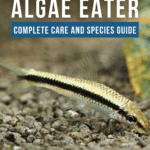
Thanks Jen, I appreciate having this information available. I just introduced a little Siamese Algae Eater to my planted 60 gallon tank and am looking forward to watching the little guy out grow my many adult Amano shrimp over the coming year and hopefully consume the bits of black beard algae they shun. I keep my tank at 72, so it looks like I’d do well to increase that a few degrees. Thus far, the new fish has explored much of the tank, but is often in hiding or somewhere out of sight, frequently hanging out in back corners with the shrimp. I hope to see it more often as it grows up and feels more at ease in its new home.